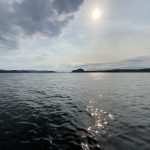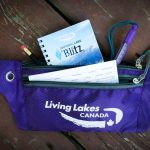Worst wildfire season underscores demand for watershed security
Banner photo features a helicopter fighting wildfire near Port Alice, B.C.
Read the web version here.
Water concerns & intensifying climate impacts
July is Lakes Appreciation Month. While we often appreciate lakes for their endless recreational opportunities and incredible biodiversity, their importance in wildfire suppression can’t be understated. Already, the 2023 B.C. wildfire season is the most destructive since 1950 with over 14,000 square kilometres burned, and we’re only halfway through the summer. The Canadian Interagency Forest Fire Centre has declared the 2023 wildfire season as the worst in Canada’s recorded history.
Surface water is critical for wildfire suppression but its supply is becoming less reliable with climate change. This month, Kootenay Lake, one of the largest lakes in B.C., and the Mackenzie River, one of the largest rivers in Canada, are experiencing near-historic and historic low flows.
With more severe wildfire seasons on the horizon combined with other intensifying impacts like the widespread drought conditions across B.C., the heat warnings in Ontario and extreme flooding in Nova Scotia, climate change adaptation requires us to better understand how freshwater systems are changing. This way we can collectively manage the risks and plan for resiliency. Check out our latest efforts towards long-term watershed security in this month’s newsletter.
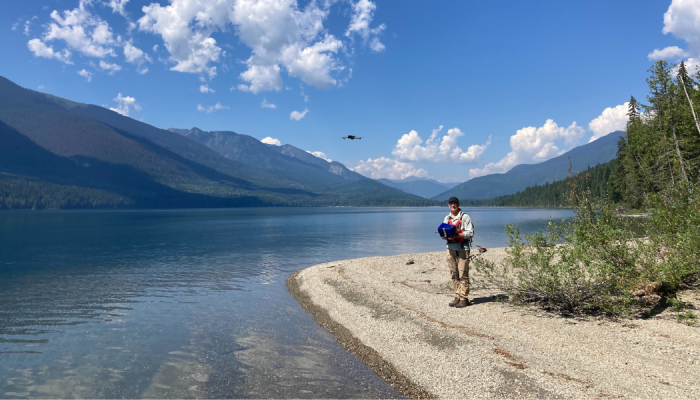
Lake surveys make waves throughout B.C. Interior
As summer hits its stride, two lake surveys are now set for August. This includes Fraser Lake, west of Prince George, and Nicola Lake, northeast of Merritt and in collaboration with the Upper Nicola Band. The surveys will map and assess the lake foreshore to help inform decision making and land-use planning, and protect lake biodiversity. The Fraser and Nicola Lake surveys mark the first steps in expanding to new lakes throughout B.C. after the recent completion of the Upper Columbia Basin project. As part of this project, the final survey reports for Trout Lake, Arrow Lakes and St. Mary Lake are now available. To learn more about the impact of our Foreshore Integrated Management Planning program, watch this short film.


A high elevation partnership with Talus Lodge
The early arrival of spring in the mountains is often a welcome sight, but also spells climate change. Earlier snowpack melt and lake ice-off, increased glacial melt, and warmer temperatures are changing alpine landscapes. Monitoring these spaces is increasingly important. This year, the High Elevation Monitoring Program is expanding throughout the East and West Kootenays, with six stream and nine lake monitoring sites, including the Talus Lakes. On a recent fieldwork trip to Talus Lodge, the High Elevation team witnessed the local impact of climate change. We’re also looking for more recreationalists to add observations to our HE iNaturalist project.

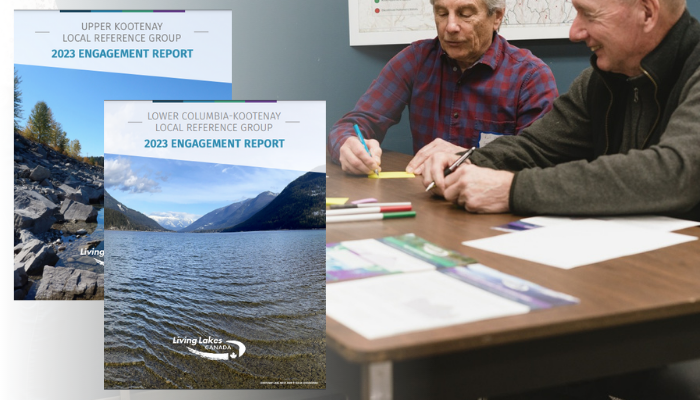
Here’s what we heard about community water concerns
Earlier in 2023, Living Lakes Canada held a series of in-person public meetings in six different communities, two virtual meetings, and numerous one-on-one consultations in the East and West Kootenays of B.C. to collect and document local residents’ water concerns and priorities. All the feedback received is supporting the selection of new monitoring sites in two hydrologic regions that our Columbia Basin Water Monitoring Framework is expanding into this year. This expansion is part of our large-scale, regional and replicable template for hydrometric and climate monitoring that is helping to track climate impacts on water sources in the Canadian Columbia Basin. The summary of community feedback is available in two reports: the Lower Columbia-Kootenay region, including the communities of Nelson, Rossland, Trail, Castlegar, Salmo, Creston, and Yaqan Nuʔkiy; and the Upper Kootenay region, including the communities of Cranbrook, Wasa, Jaffray, Yaq̓ it ʔa·knuqⱡi ‘it, and ʔaq’am.

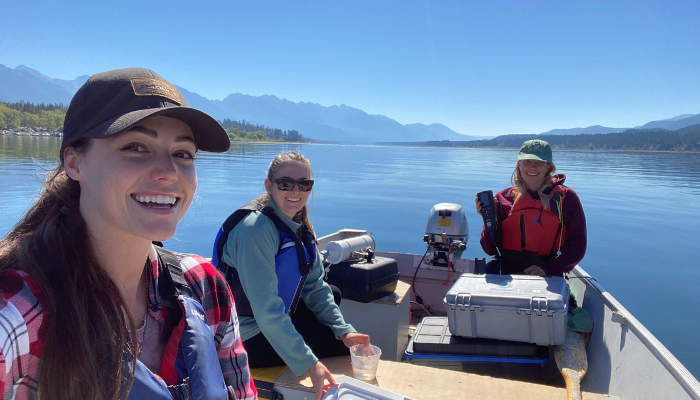
Equipment funding empowers a network of water stewards
In both nature and human society, networks are conduits for knowledge and resource sharing and facilitate collaboration toward a common goal. Over the past 18 years, the Columbia Basin Watershed Network (CBWN) has connected a constellation of stewardship groups throughout the transboundary Columbia Basin. When the CBWN dissolved in 2022, Living Lakes Canada adopted the remaining programs including the Water Monitoring Equipment Fund. The Fund supports water stewardship groups by providing, maintaining or fixing monitoring equipment. In 2023, the Fund supported 11 water stewardship groups in their monitoring efforts.

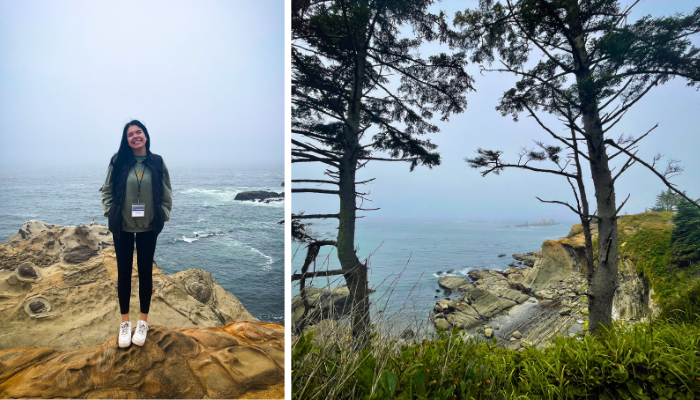
Youth Perspective on an Inter-tribal Water Summit
From June 28th to July 1st, Living Lakes Canada’s Indigenous Youth Ambassador Trinda Cote attended the Affiliated Tribes of the Northwest Indians Changing Currents: Tribal Water Summit in Bend, Oregon. As the only attendee from Canada, Trinda brought a different perspective on watersheds to the summit. Though only 15% of the Columbia Basin is in Canada, it provides 40% of the average river flows and runoff for the entire Basin. The importance of creating conversation and connections around the transboundary nature of the Columbia Basin is crucial for its future.

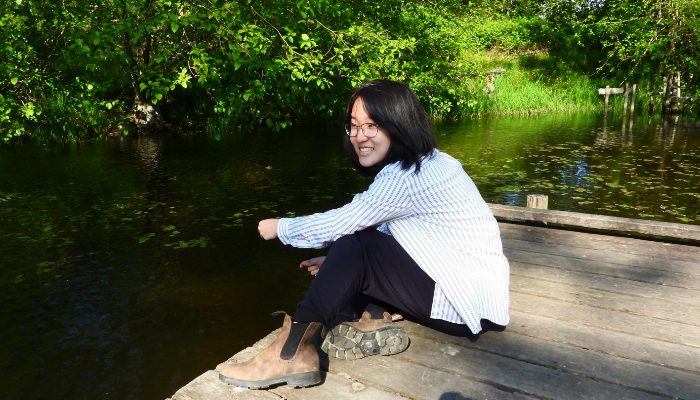
High school student gets outside with the National Lake Blitz
As a reason to get outside, Lily Liang first joined the National Lake Blitz in 2022 and set out to monitor Mclean Ponds in the Langley Township of B.C. Lily developed a special connection with place as a young camper and continues to appreciate the local wildlife including Beavers, Dragonflies and endangered Western Painted Turtles. “Having that connection to the natural spaces around us is the first step to protecting it,” says Lily.
For the 2023 Lake Blitz, 442 volunteers signed up to monitor 273 lakes in 9 provinces and 1 territory. This year alone, volunteers like Lily have collected over 800 data sets that are now available for everyone to see on the interactive Lake Observation Map. Start by typing your hometown or nearest lake into the Search Bar to bring up the observations nearest you.

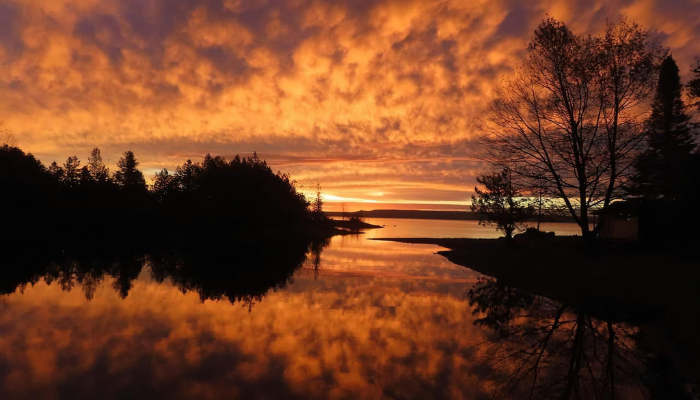
Get ready to vote in Canada-wide lake photo challenge
Hundreds of entries have poured in from coast to coast for Living lakes Canada’s 3rd annual Lake Biodiversity Photo Challenge — 526 impactful photos now fill the online gallery, breaking last year’s record of 245 entries. If you haven’t submitted a photo yet, you have until July 31st to enter the challenge. Starting August 1st, you can help choose a Public Favourite in each category. Visit the 2023 online photo gallery and follow the instructions to cast your votes. Be prepared to be wowed! All the winners will receive prize packs thanks to the generosity of partners: Lush Cosmetics, Kicking Horse Coffee, Teadore, Earth Rangers, Laykhaus and Float-Eh.

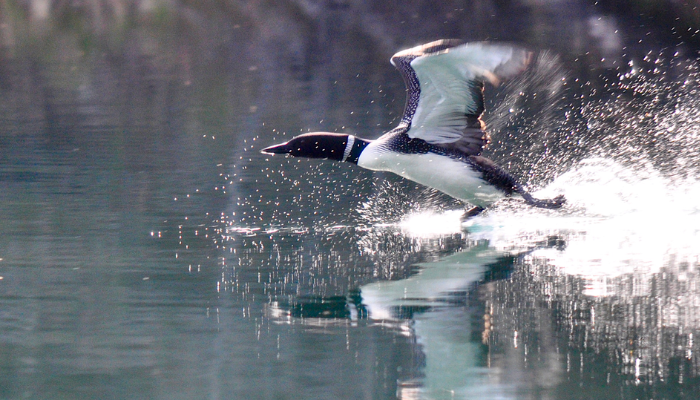
We’re seeking Board Members!
Are you interested in collaborating to protect freshwater sources in a changing climate? Become a Board Member with Living Lakes Canada! We are looking for progressive thinkers with diverse voices, backgrounds and perspectives who are keen to contribute their expertise and knowledge to the growth and strategic direction of our water stewardship non-profit. If you feel Living Lakes Canada could be a fit for you, we would love to hear from you!

Enjoy reading our newsletter? Share it with a friend!




